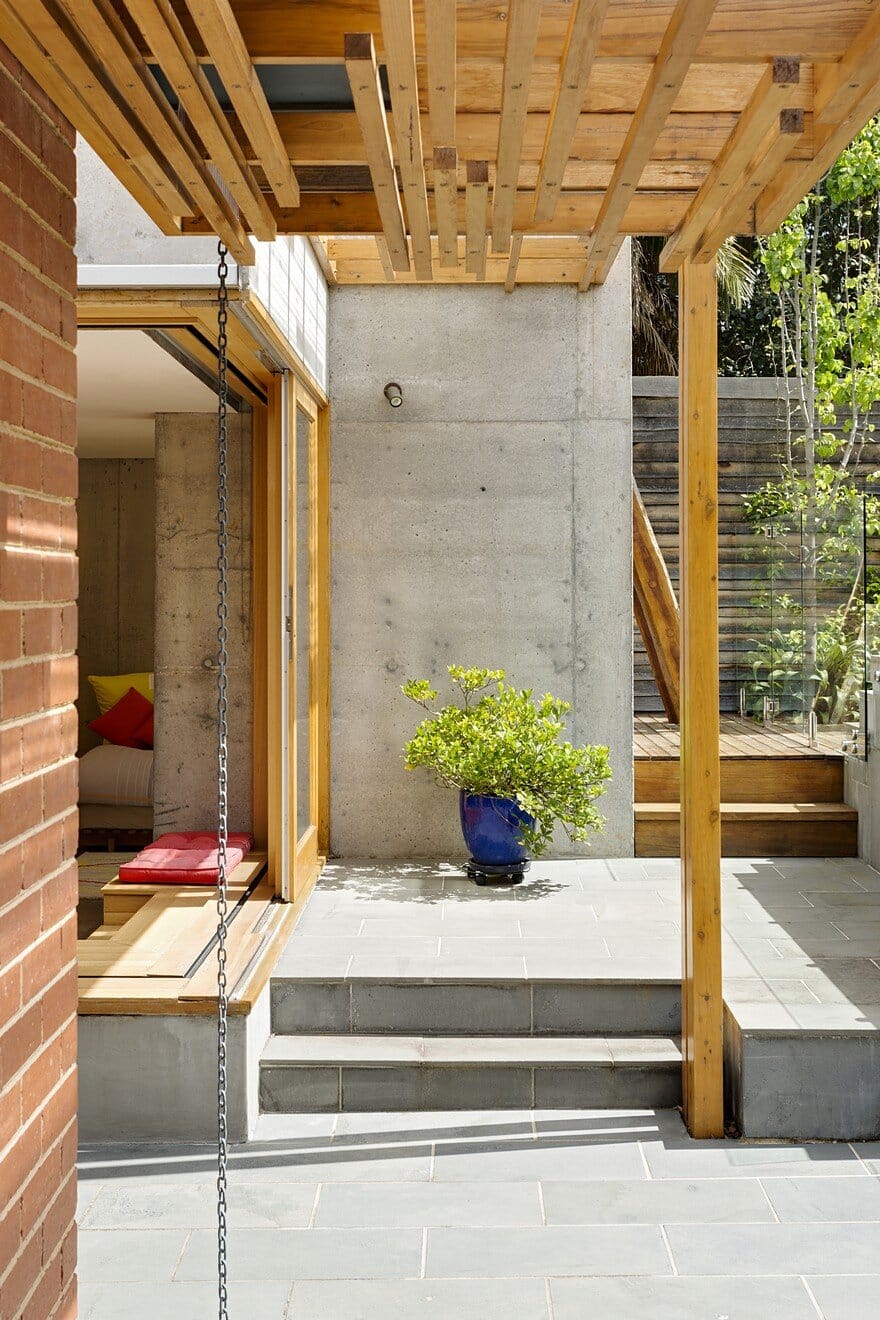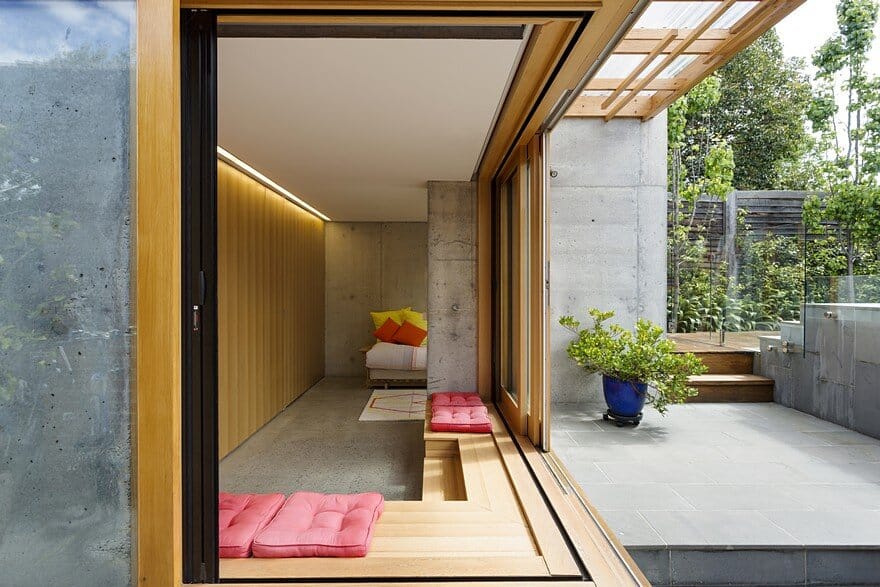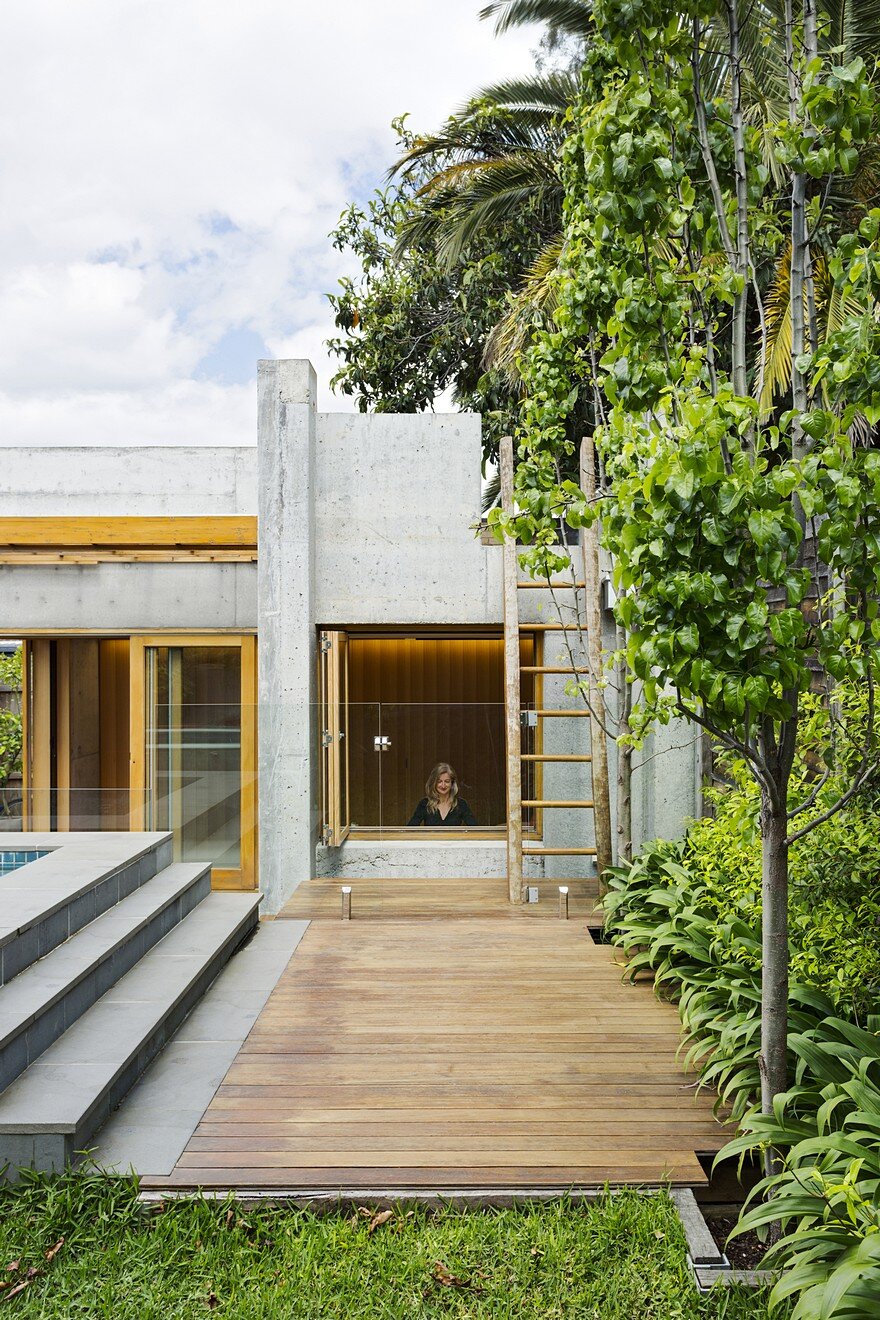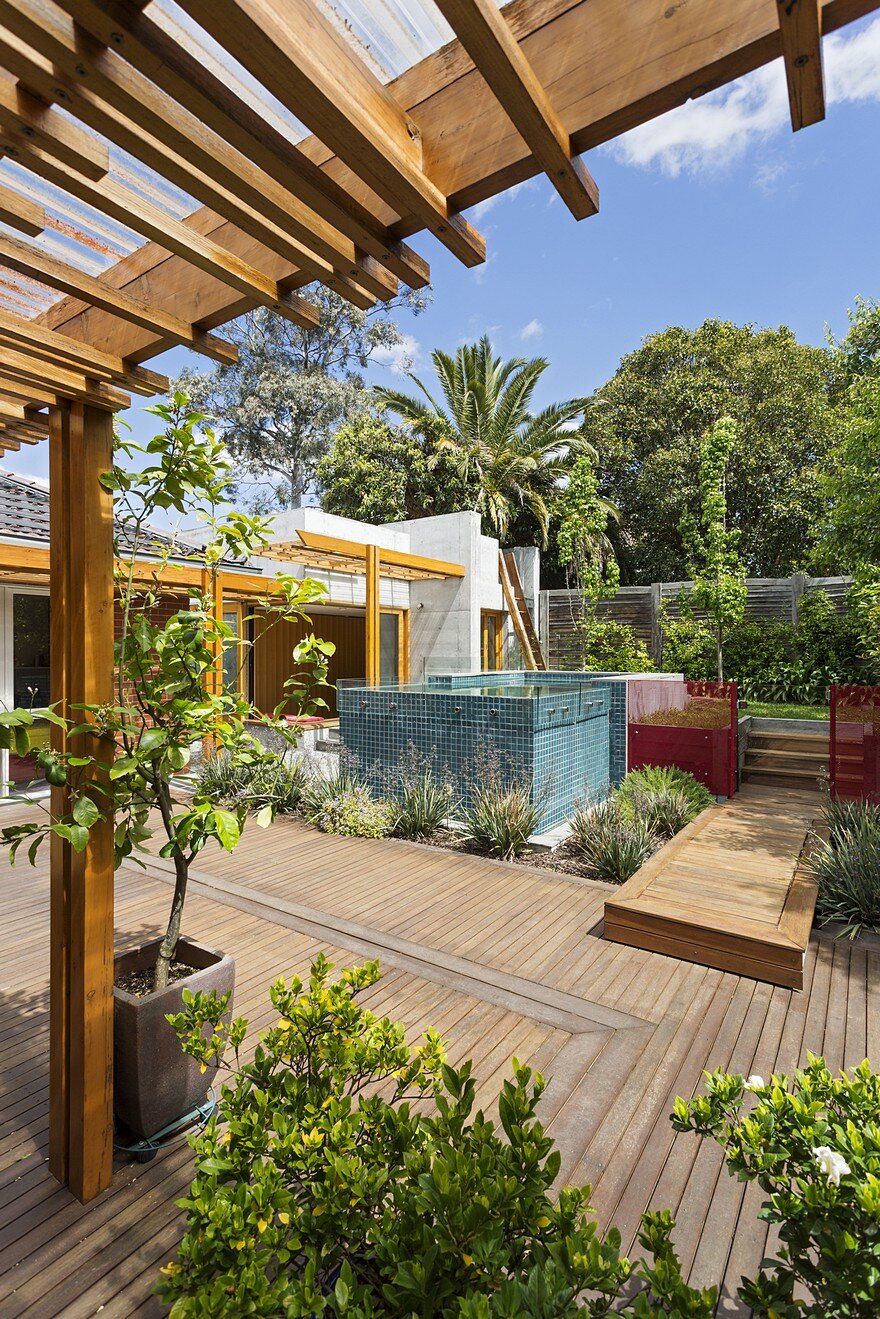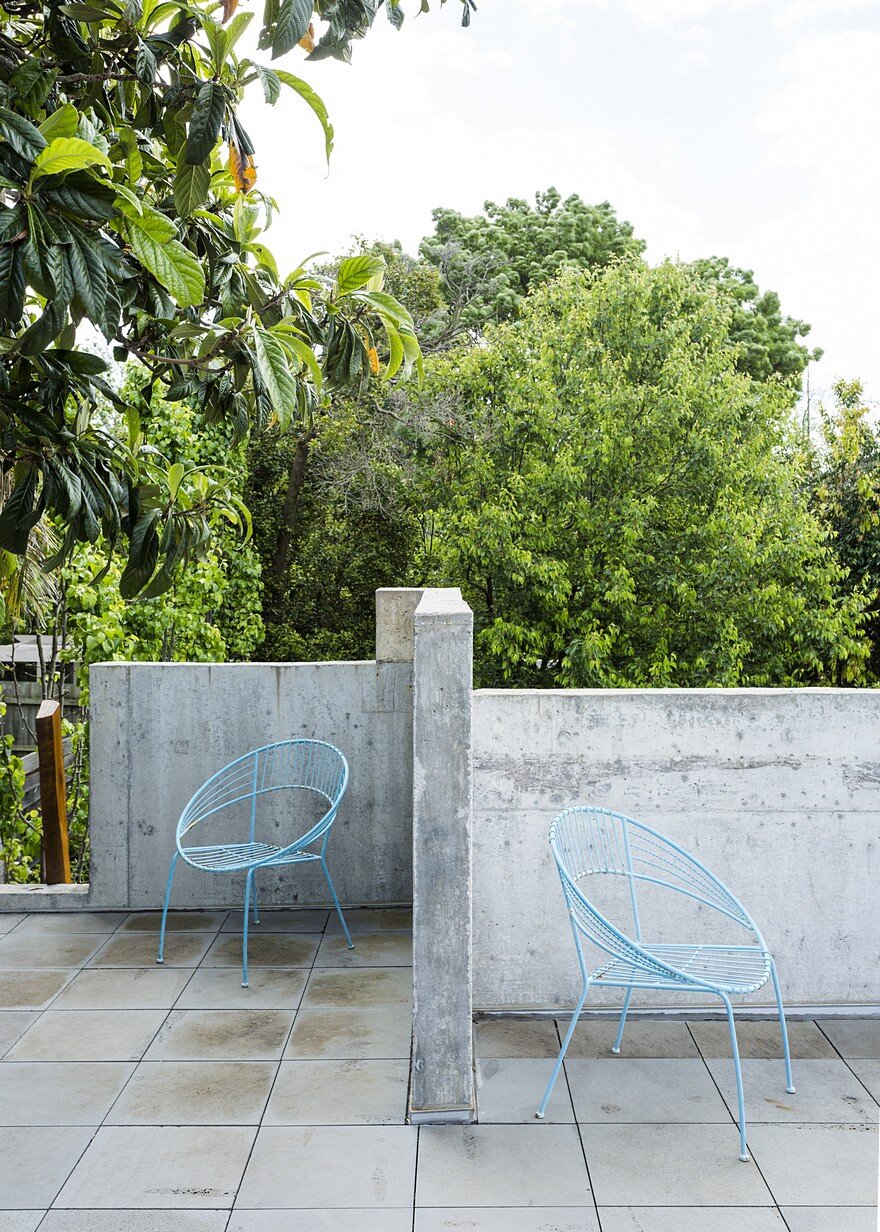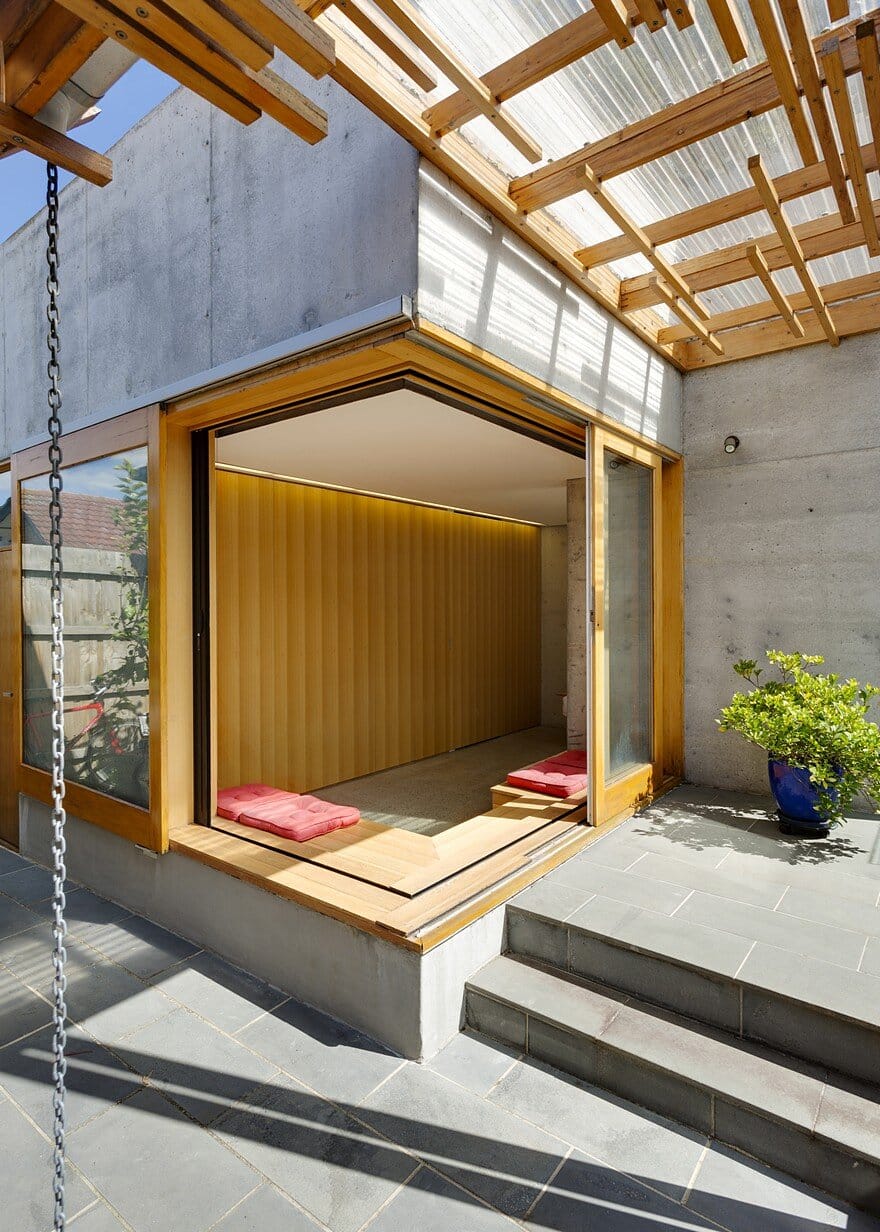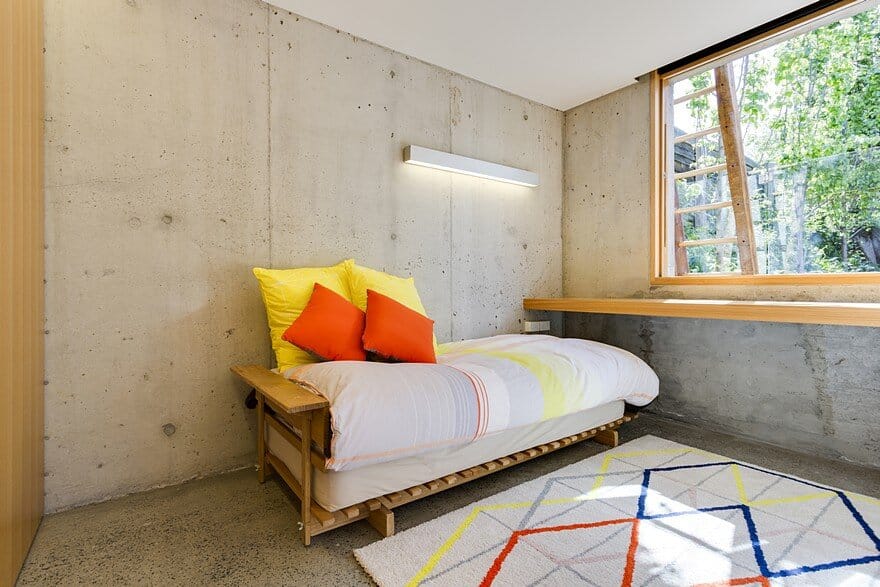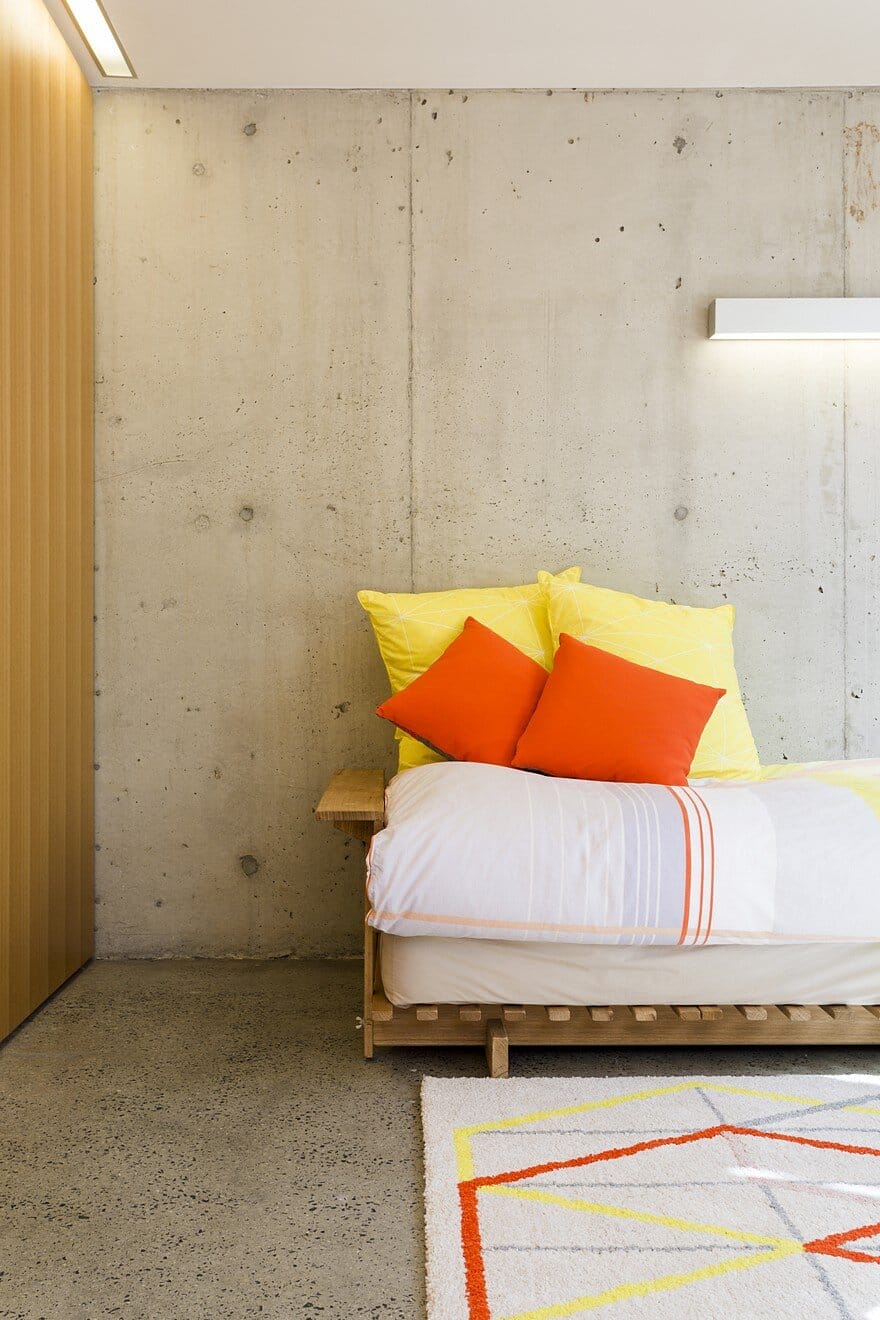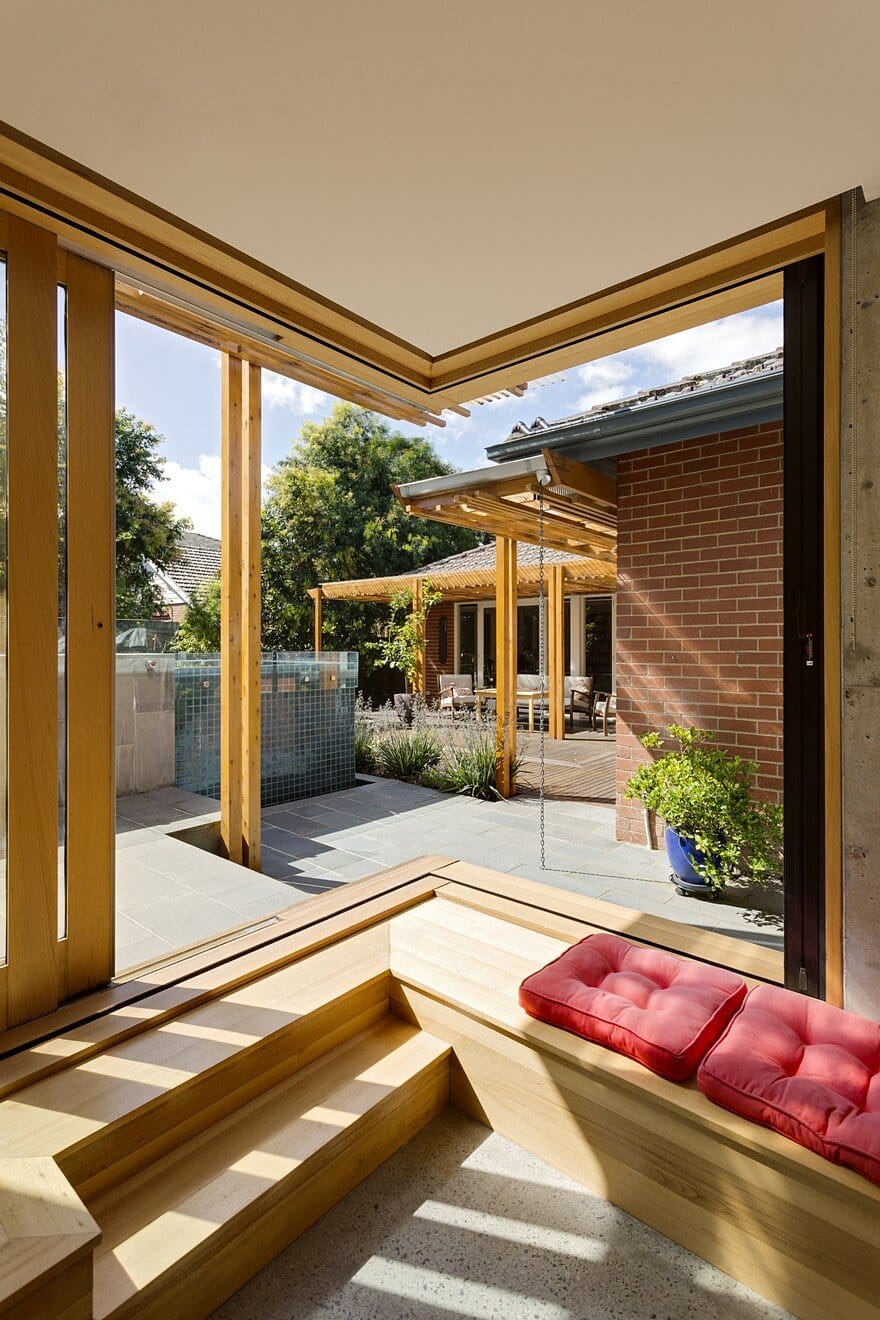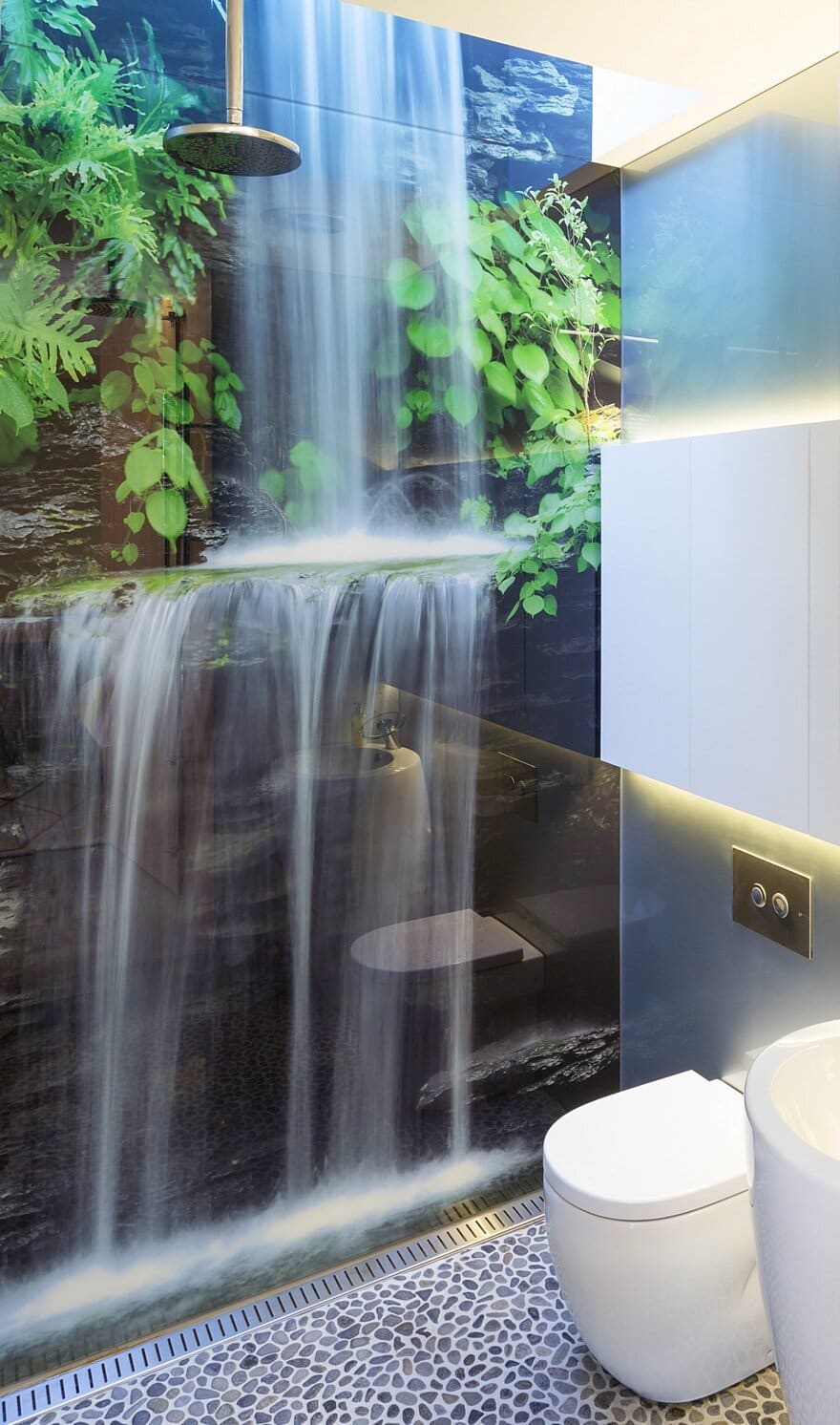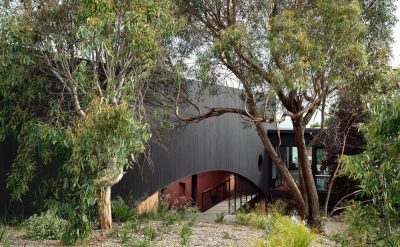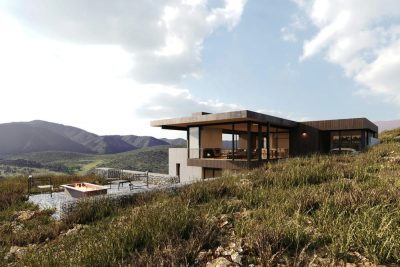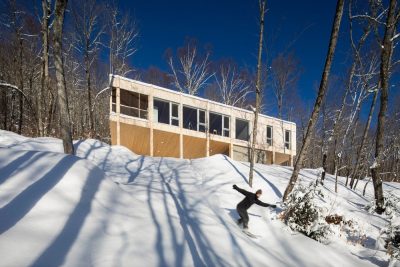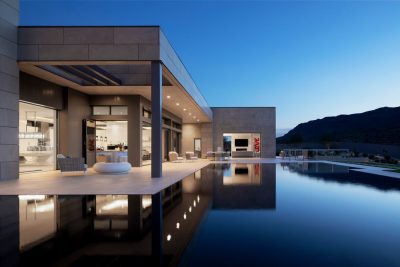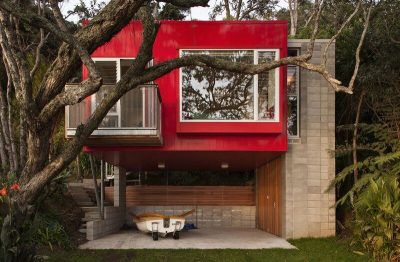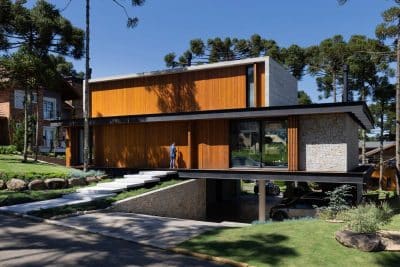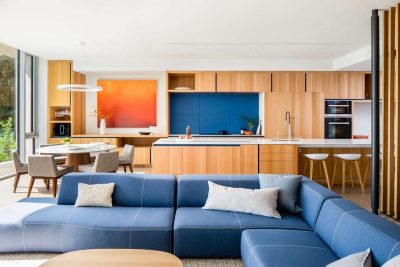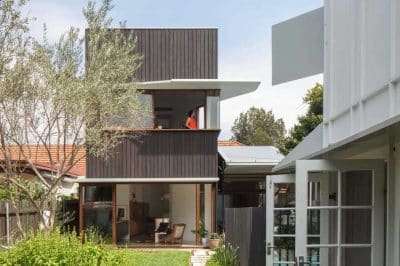Project: Home Office Pavilion
Architects: Ande Bunbury Architects
Project Team: Ande Bunbury, Karen Abernethy, James Wong
Collaborators: Keith Patrick & Associates, Dolphin Pools
Location: Camberwell, Australia
Area: 34 m2
Photography: Drew Echberg
Courtesy of Ande Bunbury Architects
We are calling the space the “ home office ” but it is equally a games room, pool house, bedroom, art studio, relaxation space and a DJ booth. The Home Office pavilion was inspired by modern Japanese architecture found in densely populated residential precincts like Aoyama, Tokyo. Through innovative design, small spaces can be transformed into highly functional beautiful spaces in which to live. It is also important to create built environments which suit multiple uses to extend the useful life of a building and thereby reduce its environmental impact.
The Home Office is a separate building in a residential back yard that incorporates a hidden bathroom, tool shed and rooftop deck. A plunge pool and a pergola over an existing deck were also included as part of the project.
What was the brief?
The clients wanted to build a new room and bathroom in the location of a former single car garage behind their house. Of course that garage was full so we also needed to make somewhere to store all the things currently in the garage. They wanted to add a small pool and make the back garden more usable. The back of the house had a huge wall of unshaded western facing windows and a massive external deck that was too hot & exposed for much of the year. The design needed to resolve the requirements for pool fencing, views from the house to open to the garden, and to connect the new free-standing pavilion to the house.
What were the key challenges?
The title for the property had a covenant that required specific construction materials – brick, stone or concrete for walls and slate or tile roofs. This project interpreted these traditional covenant requirements within a modern context with exposed insulated off-form concrete walls inside & out and a tiled rooftop deck.
Resolution of levels was very important in this project as the site slopes down towards the house. The pool was designed to minimize the need for pool fencing and is partially elevated above the site to give a wet edge and water feature wall when viewed from the house. There was also extremely limited access to the part of the site we were building on. All materials had to be carried down a side pathway past the house.
What were the solutions?
Although the covenant on the title tried to limit the construction to be as conservative as possible we decided to interpret the requirements in a contemporary way. The clients are fans of modern Japanese architecture & we decided to use exposed concrete walls both inside & out, with a polystyrene insulating panel sandwiched in the middle. Because of the limited access we couldn’t get precast concrete panels delivered to the site so the concrete was poured in-situ – the resulting quality of finish is rough & textured which gives a great character.
Luckily we have limited words in the English language and the requirement for a “tiled” roof meant that we were able to build a flat roof deck with paving tiles on it. This is a wonderful secluded hideaway under the tree canopy like a cubby house for adults. We wanted to incorporate fun into the built environment, a building that invites discovery: an en-suite behind a hidden door; a wall that is really a bank of storage cupboards; a ladder which leads to a secluded garden; a view from the desk where eye level is ground level.
What are the sustainability features?
In the Home Office pavilion the flexibility of use of the space and durability are the key sustainability principles. The pavilion has optimal north orientation for all windows to the living area, with sun-shading provided by a pergola with timber battens. Service areas are located to the south.
Virtually all materials used are maintenance-free. The off-form concrete is exposed internally & externally for a highly durable finish. The concrete mix has 30% cement substitution with flyash/slag and recycled aggregate. Insulation within the concrete walls is R2.2 polystyrene board.
Polyester roof insulation batts have 80% recycled content. The living area has double glazed timber framed windows & doors and the bathroom has a double glazed rooflight. Specifications call up high levels of gap sealing, stormwater management & implementation of a waste management plan during construction. All lighting is LED or fluorescent fittings, installed where task lighting is required.

